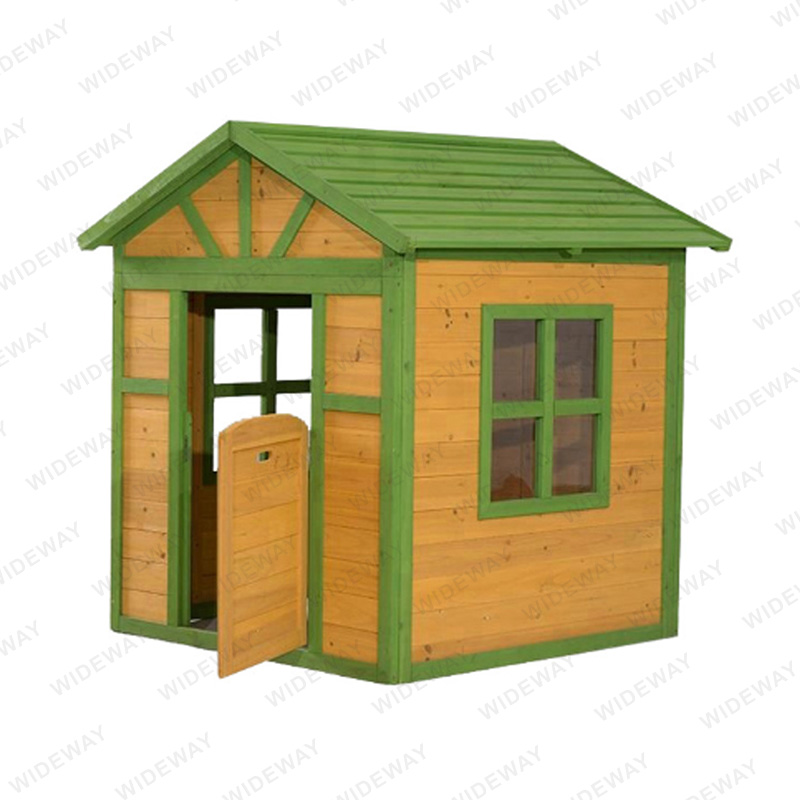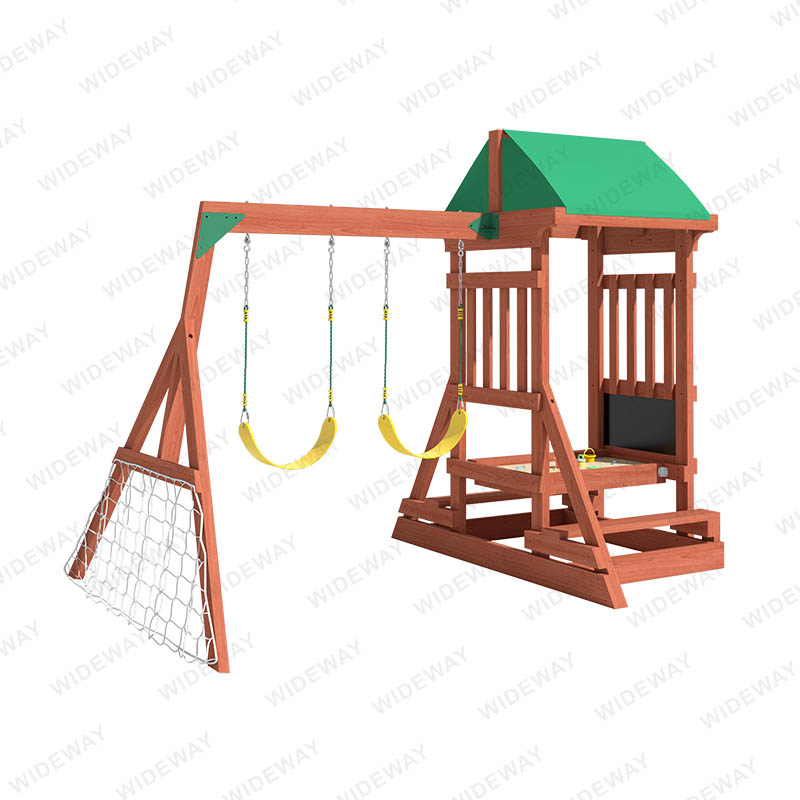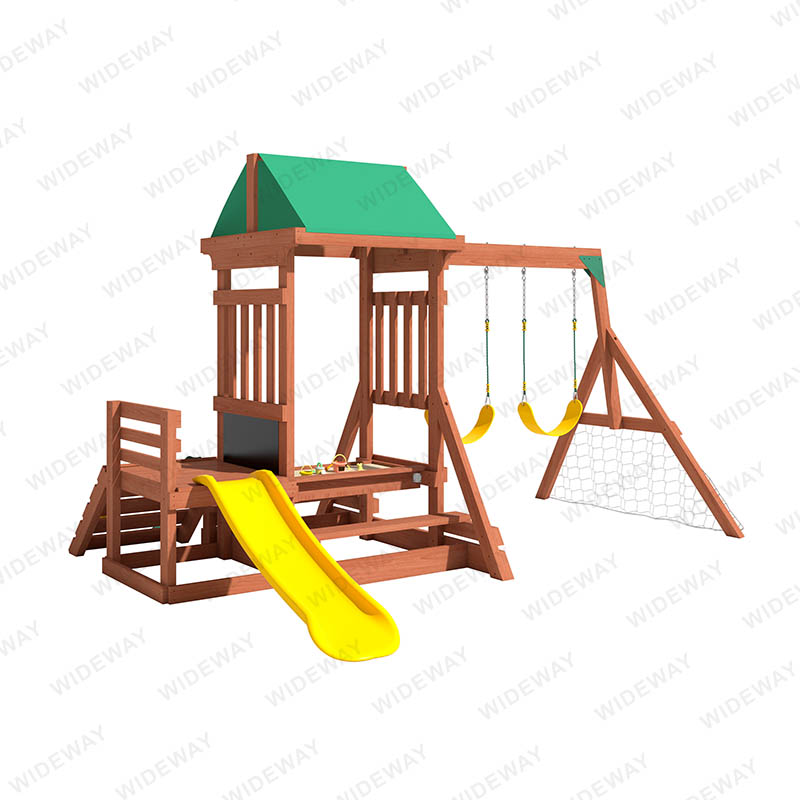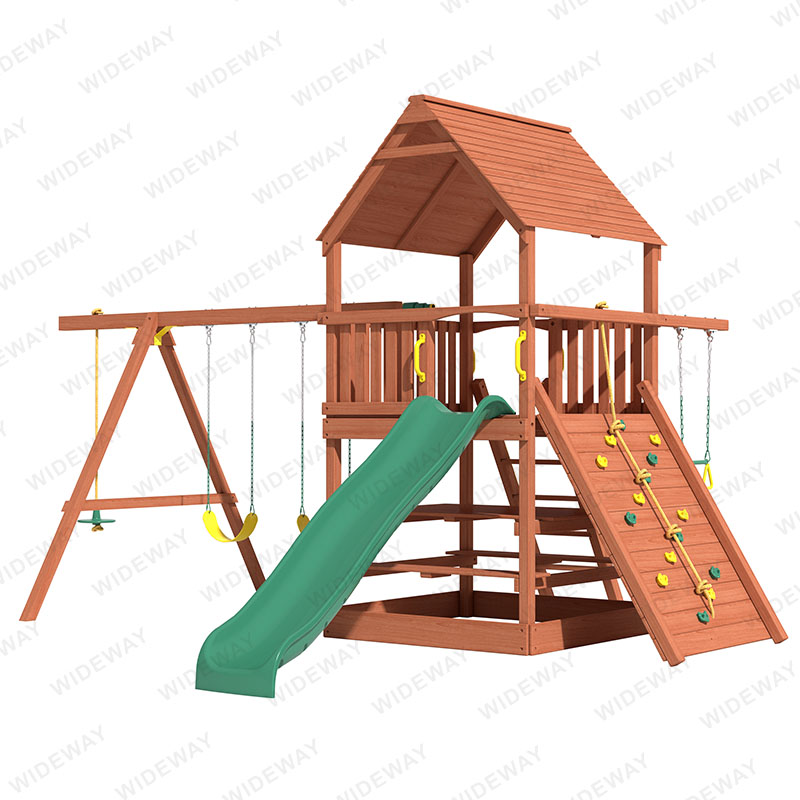Why is a play fence important for a children's playhouse?
2024-11-15
Why do children need a play fence?
Children are curious and love to explore their surroundings, but this can be dangerous without proper supervision. A play fence provides a secured area for children to play freely, away from potential dangers such as cars, strangers, and pets. This also helps to prevent children from wandering off into potentially hazardous areas in the backyard or neighborhood. A play fence can also promote physical activity, imaginative play, and social interaction in a controlled environment.What are the benefits of choosing a play fence?
A play fence offers several benefits to both parents and children. First, it provides a designated play area to prevent children from playing in areas that can cause harm. It also helps parents to supervise their kids' activities while having some peace of mind. Play fences are also versatile, as they can be customized to different shapes and sizes depending on available space. Finally, play fences come in a variety of materials, including wood, vinyl, and plastic, offering different levels of durability, aesthetics, and convenience.How to choose the right play fence?
When choosing a play fence, it is essential to consider several factors such as size, shape, material, durability, and ease of assembly. A good play fence should also have safety features like non-toxic paint, smooth edges, and secure locks. The play fence should also blend well with your outdoor setting and remain aesthetically pleasing with minimal maintenance.Conclusion
In summary, a Children's Playhouse with Play Fence is a great investment for parents who want to create a safe and secure play environment for their children. It offers numerous benefits, including safety, physical activity, imaginative play, and social interaction. By considering factors such as size, shape, material, durability, and safety features, parents can choose the right play fence for their children.Ningbo Longteng Outdoor Products Co., Ltd. is a leading manufacturer of Children's Playhouses with Play Fences. We offer a wide range of quality products that can suit different preferences and budgets. Our company is committed to providing safe, durable, and aesthetically pleasing play fences to our valued customers. Contact us today at sales4@nbwideway.cn to place an order or learn more about our products.
Research Papers:
Ginsburg, K.R., 2007. The importance of play in promoting healthy child development and maintaining strong parent-child bonds. Pediatrics, 119(1), pp.182-191.
Hennessy, E., 2018. Exploring the Opportunities and Benefits of Outdoor Play in Nature for Children-A Literature Review. Children, 5(9), p.118.
Pellegrini, A.D., 2014. The role of play in human development. Oxford handbook of developmental psychology, vol. 1: Body and mind, pp. 387-408.
Pellis, S.M. and Pellis, V.C., 2017. Rough‐and‐tumble play and the development of the social brain. Current Directions in Psychological Science, 26(2), pp. 128-132.
Smith, P.K. et al., 2017. Play and brain development: Neurobiological mechanisms underlying the effects of play deprivation on children’s socio-emotional development. Neuroscience & Biobehavioral Reviews, 80, pp. 583-599.
Sutton-Smith, B., 2018. The Ambiguity of Play, vol. 56. Harvard University Press.
Vygotsky, L.S., 1978. Play and its role in the mental development of the child. Soviet Psychology, 16(2), pp.62-76.
Whitebread, D., 2012. The importance of play. UNESCO.
Zhang, J.W. et al., 2014. Play and the regulation of emotions. Journal of play therapy, 23(3), pp. 225-238.
Zosh, J.M. et al., 2015. Hands-on math: A randomized control trial of a kindergarten math curriculum. Journal of Research on Educational Effectiveness, 8(2), pp.156-183.
Zosh, J.M. et al., 2017. Block talk: Spatial language during block play. Mind, Brain, and Education, 11(4), pp. 196-205.




